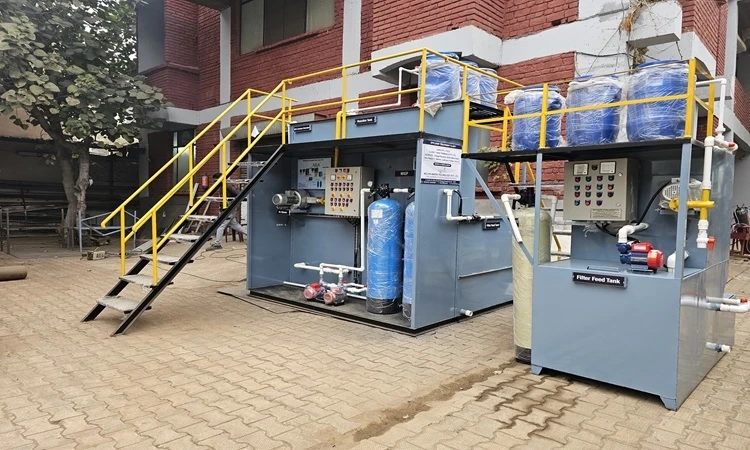With rapid urbanization and increasing population densities, the management of municipal wastewater has become a critical issue for cities around the globe. Sewage Treatment Plants (STPs) are at the forefront of this challenge, ensuring that urban wastewater is treated efficiently before it is discharged into the environment or reused. This comprehensive guide explores the processes, significance, and future of STPs in maintaining public health and environmental integrity.
Understanding Sewage Treatment Plants
Sewage Treatment Plants are designed to process municipal wastewater, which comprises domestic sewage, stormwater runoff, and, occasionally, industrial effluents. The primary goal of STPs is to remove contaminants that pose health risks and environmental hazards, thereby producing treated water that can be safely discharged or reused.
Key Processes in Sewage Treatment Plant
The treatment of sewage in STPs is typically divided into several stages, each aimed at progressively removing different types of pollutants.
Preliminary TreatmentThis initial stage focuses on removing large debris and inorganic materials that can damage equipment and obstruct the treatment process. Key steps include:
Screening: Physical barriers remove large objects like sticks, rags, and plastics.Grit Removal: Sand, gravel, and other heavy particles are settled out in grit chambers. Primary TreatmentThe primary treatment stage involves the physical separation of suspended solids from the wastewater. Key processes include:
Sedimentation: Wastewater is held in large tanks, allowing heavier solids to settle at the bottom as sludge, while lighter materials like oils and greases float to the top and are skimmed off. Secondary TreatmentThis stage employs biological processes to degrade organic matter in the wastewater. The primary methods include:
Activated Sludge Process: Aeration tanks introduce air to promote the growth of aerobic bacteria that consume organic pollutants. The resulting biomass, or activated sludge, is then settled out. Tertiary TreatmentTertiary treatment is an advanced stage that targets the removal of remaining contaminants to achieve high-quality effluent. This may involve:
Filtration: Removing fine particles through sand filters or membrane filters.Nutrient Removal: Biological or chemical processes to remove nitrogen and phosphorus, which can cause eutrophication in water bodies.Disinfection: Killing pathogenic microorganisms using chlorine, ultraviolet light, or ozone. Sludge TreatmentSludge generated during primary and secondary treatment must be further processed to reduce its volume and harmful characteristics. Common methods include:
Anaerobic Digestion: Microbial breakdown of organic matter in the absence of oxygen, producing biogas that can be used for energy.Dewatering: Mechanical processes to reduce the water content of sludge, making it easier to handle and dispose of.Composting: Aerobic decomposition of organic sludge to produce a stable, soil-like material that can be used as a fertilizer.Importance of Sewage Treatment Plants
STPs play a crucial role in urban sanitation and environmental protection. Key benefits include:
Public Health ProtectionBy removing pathogens and harmful chemicals from wastewater, STPs prevent the spread of waterborne diseases and protect public health. This is particularly important in densely populated urban areas where untreated sewage could easily contaminate drinking water supplies.
Environmental ConservationUntreated sewage can severely impact aquatic ecosystems by depleting oxygen levels and introducing toxic substances. STPs help mitigate these effects by ensuring that discharged effluent meets stringent environmental standards, thereby protecting rivers, lakes, and coastal waters.
Resource RecoveryModern STPs are increasingly focused on recovering valuable resources from wastewater. This includes:
Water Reuse: Treated effluent can be used for irrigation, industrial processes, or even as potable water after advanced treatment.Energy Production: Biogas generated from anaerobic digestion of sludge can be used to produce electricity or heat.Nutrient Recycling: Nutrients like nitrogen and phosphorus can be recovered and used as fertilizers, reducing the need for synthetic alternatives.Challenges and Innovations in Sewage Treatment
While STPs provide essential services, they also face numerous challenges, driving the need for continuous innovation.
Operational CostsSTPs require significant energy and resources to operate, particularly for advanced treatment processes. Innovations in energy efficiency and renewable energy integration are critical to reducing operational costs.
Emerging ContaminantsPharmaceuticals, personal care products, and microplastics are increasingly detected in wastewater and require new treatment technologies to remove. Research into advanced oxidation processes, membrane technologies, and bioremediation is ongoing to address these challenges.
Climate ChangeClimate change impacts, such as increased rainfall and sea-level rise, can overwhelm existing sewage infrastructure. Adaptive strategies, including the development of resilient treatment systems and decentralized wastewater management, are essential to address these risks.
Sludge ManagementThe safe disposal or reuse of sludge remains a significant issue. Innovations in sludge processing, such as pyrolysis and gasification, offer potential solutions by converting sludge into biochar or syngas.
Future Directions in Sewage Treatment
The future of sewage treatment lies in integrating advanced technologies, sustainable practices, and resilient infrastructure.
Decentralized Treatment SystemsDecentralized systems treat wastewater closer to its source, reducing the burden on centralized plants and providing flexible solutions for urban and rural areas alike. These systems can enhance local water reuse and reduce the infrastructure required for large-scale sewage transport.
Smart Monitoring and ControlThe use of sensors, data analytics, and artificial intelligence can optimize treatment processes, detect issues in real-time, and improve overall plant efficiency. Smart systems enable proactive maintenance and adaptive management, ensuring reliable operation.
Circular Economy ApproachesAdopting circular economy principles in sewage treatment involves maximizing resource recovery and minimizing waste. This includes the integration of resource recovery technologies and promoting the use of treated wastewater and recovered materials in various sectors.
Conclusion
Sewage Treatment Plants are indispensable in managing urban wastewater, safeguarding public health, and protecting the environment. As urbanization continues to accelerate, the importance of efficient and resilient sewage treatment systems cannot be overstated. By embracing innovation and sustainability, STPs will continue to evolve, ensuring clean water and healthy ecosystems for future generations.


